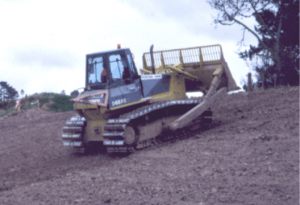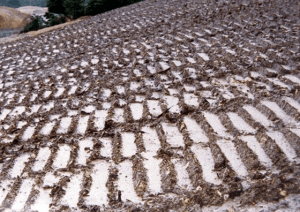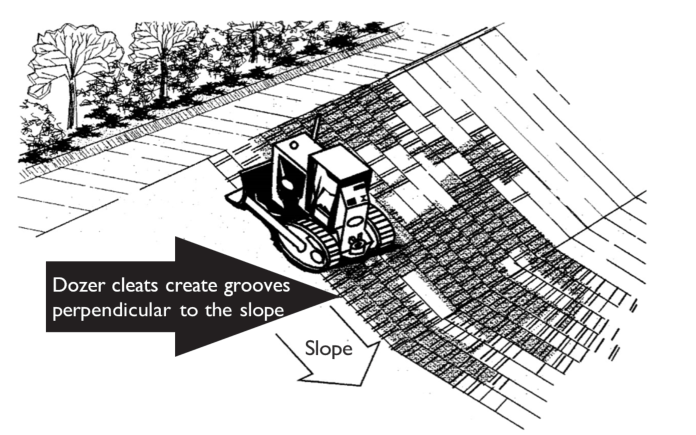Erosion Control
Water management controlsSurface roughening
What, why, when and issues to look out for
What
Surface roughening refers to the practice of roughening the surface of unstabilised earth surface (bare soil) – either with horizontal grooves across the slope, or by tracking with construction equipment. This slows water runoff which does reduce erosion, but this tool on its own is not a full stabilisation method and needs to be combined with others from the toolbox that provide soil cover.
Why
Surface roughening:
- Changes the profile of the construction surface soil to promote infiltration and increase flowpath lengths. By changing the roughness coefficient, less sediment is generated.
- Helps capture small quantities of sediment in the ‘hollows’.
- Breaks up hard or compacted surfaces by ripping or scarification before seeding for either temporary or permanent revegetation programmes.
- Traps seed and provides moisture sinks in the furrows, so that vegetation can establish well.
- Helps mulch and topsoil adhere to slopes for better control during heavy storms.
When
Surface roughening is a simple technique that should always be one of your tools on shallow to moderate slopes that have the potential to generate sediment discharges.
Issues to look out for
Surface roughening has the following limitations:
- It is a short-term measure which only reduces erosion – it does not stabilise. After surface roughening, you must stabilise slopes with other measures, eg compost, mulch or topsoil and vegetation.
- It cannot be relied on as the only form of erosion control, because it will not work well enough during intense or long rainfall events. You will need other devices to help control sediment from the site, eg covering the exposed soil quickly.
- Ripping or scarification may allow water to enter dispersible soils or soils that are vulnerable to tunnelling, thereby making erosion more likely.
- Cut batters in highly erodible soils should not be roughened so much that scarification lines will collect water in channels or rills.
- Very dry, fine-textured soils should not be surface roughened, as they may be prone to pulverisation, making them more susceptible to detachment and transport by wind or water.
Design essentials
No formal design is necessary for the construction of surface roughening. However, you still must meet the following design essentials for the tool to work:
- Before you do the surface roughening, intercept water that flows onto the works area and divert it away from the area(s) to be roughened.
- Before roughening a batter face, fill existing rills. Roughening must be done up and down the face so it leaves a cleat mark across the contour, as shown:
- Track-walking must leave well-defined cleat impressions in the soil, parallel to the contour. This creates a series of mound and hollow features that act as micro sediment traps
- When track-walking topsoil material, take care not to over compact it. Keep the soil structure suitable for plant and seed germination.
Construction and operation
When constructing and operating surface roughening:
- Intercept upslope runoff water and divert it away from the area(s) to be roughened
- Fill existing rills before roughening or track walking a batter face
- Do roughening up and down the face, so that it leaves a cleat mark across the contour
- For track-walking, make well-defined cleat impressions in the soil, parallel to the contour or perpendicular to the slope
- When track-walking topsoil material, take care not to over compact it
- Cover the soil rapidly after the roughening with 5 cm of compost or a suitable depth of topsoil.
Maintaining and decommissioning
When maintaining surface roughening
- Periodically check the slopes for signs of erosion (rills and channels)
- Rework and/or reseed the area as necessary.
When decommissioning surface roughening
There is no formal process.


